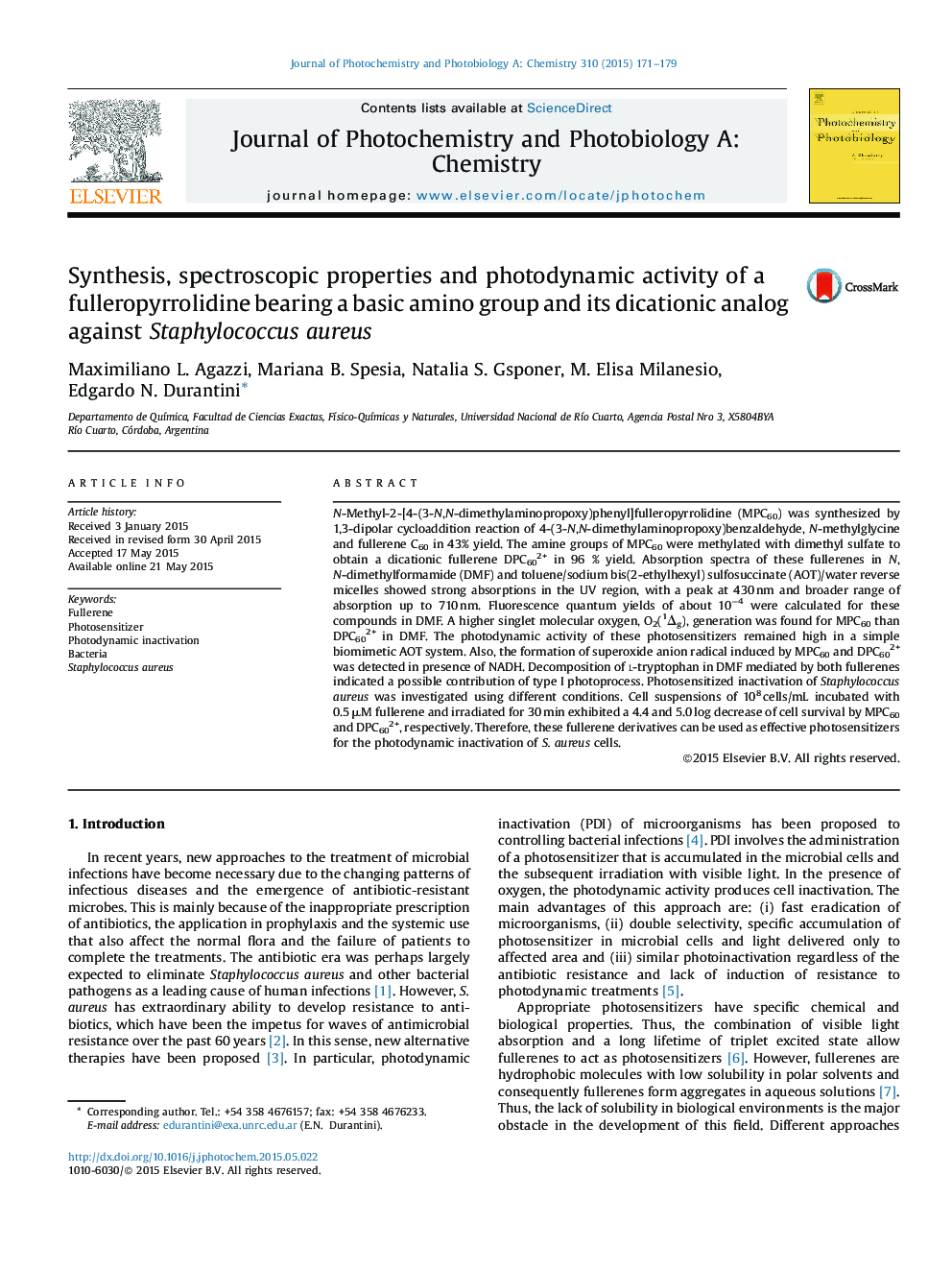| کد مقاله | کد نشریه | سال انتشار | مقاله انگلیسی | نسخه تمام متن |
|---|---|---|---|---|
| 26600 | 43965 | 2015 | 9 صفحه PDF | دانلود رایگان |
• A novel fulleropyrrolidine derivative was synthesized by 1,3-dipolar cycloaddition.
• A dicationic fulleropyrrolidinium was obtained by exhaustive methylation.
• Fullerene derivatives produce efficiently singlet molecular oxygen.
• Fullerenes photosensitize the formation of superoxide anion radical in presence of NADH.
• A high photoinactivation of Staphylococcus aureus was found for the dicationic fullerene.
N-Methyl-2-[4-(3-N,N-dimethylaminopropoxy)phenyl]fulleropyrrolidine (MPC60) was synthesized by 1,3-dipolar cycloaddition reaction of 4-(3-N,N-dimethylaminopropoxy)benzaldehyde, N-methylglycine and fullerene C60 in 43% yield. The amine groups of MPC60 were methylated with dimethyl sulfate to obtain a dicationic fullerene DPC602+ in 96 % yield. Absorption spectra of these fullerenes in N,N-dimethylformamide (DMF) and toluene/sodium bis(2-ethylhexyl) sulfosuccinate (AOT)/water reverse micelles showed strong absorptions in the UV region, with a peak at 430 nm and broader range of absorption up to 710 nm. Fluorescence quantum yields of about 10−4 were calculated for these compounds in DMF. A higher singlet molecular oxygen, O2(1Δg), generation was found for MPC60 than DPC602+ in DMF. The photodynamic activity of these photosensitizers remained high in a simple biomimetic AOT system. Also, the formation of superoxide anion radical induced by MPC60 and DPC602+ was detected in presence of NADH. Decomposition of l-tryptophan in DMF mediated by both fullerenes indicated a possible contribution of type I photoprocess. Photosensitized inactivation of Staphylococcus aureus was investigated using different conditions. Cell suspensions of 108 cells/mL incubated with 0.5 μM fullerene and irradiated for 30 min exhibited a 4.4 and 5.0 log decrease of cell survival by MPC60 and DPC602+, respectively. Therefore, these fullerene derivatives can be used as effective photosensitizers for the photodynamic inactivation of S. aureus cells.
Figure optionsDownload as PowerPoint slide
Journal: Journal of Photochemistry and Photobiology A: Chemistry - Volume 310, 1 September 2015, Pages 171–179
